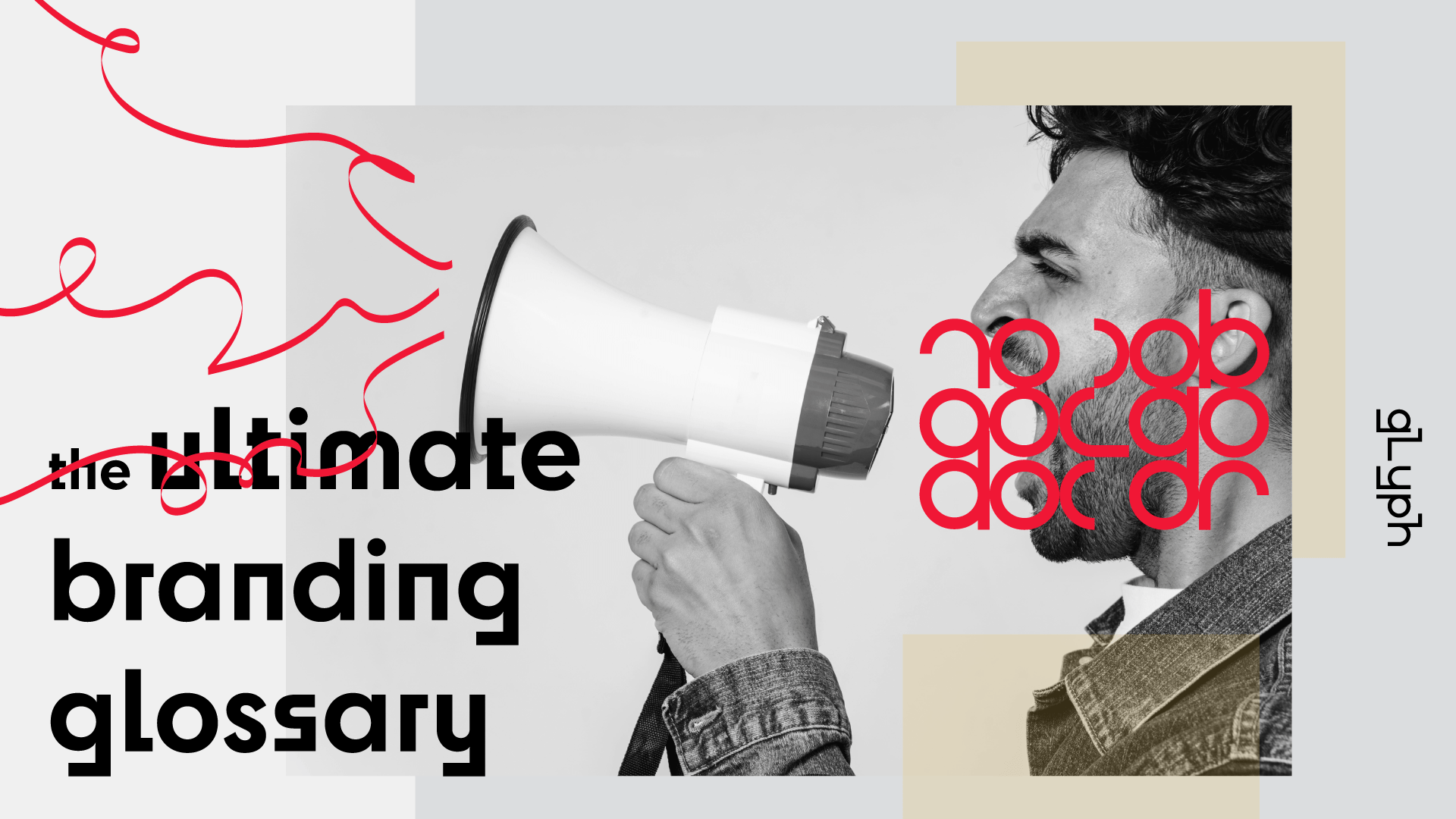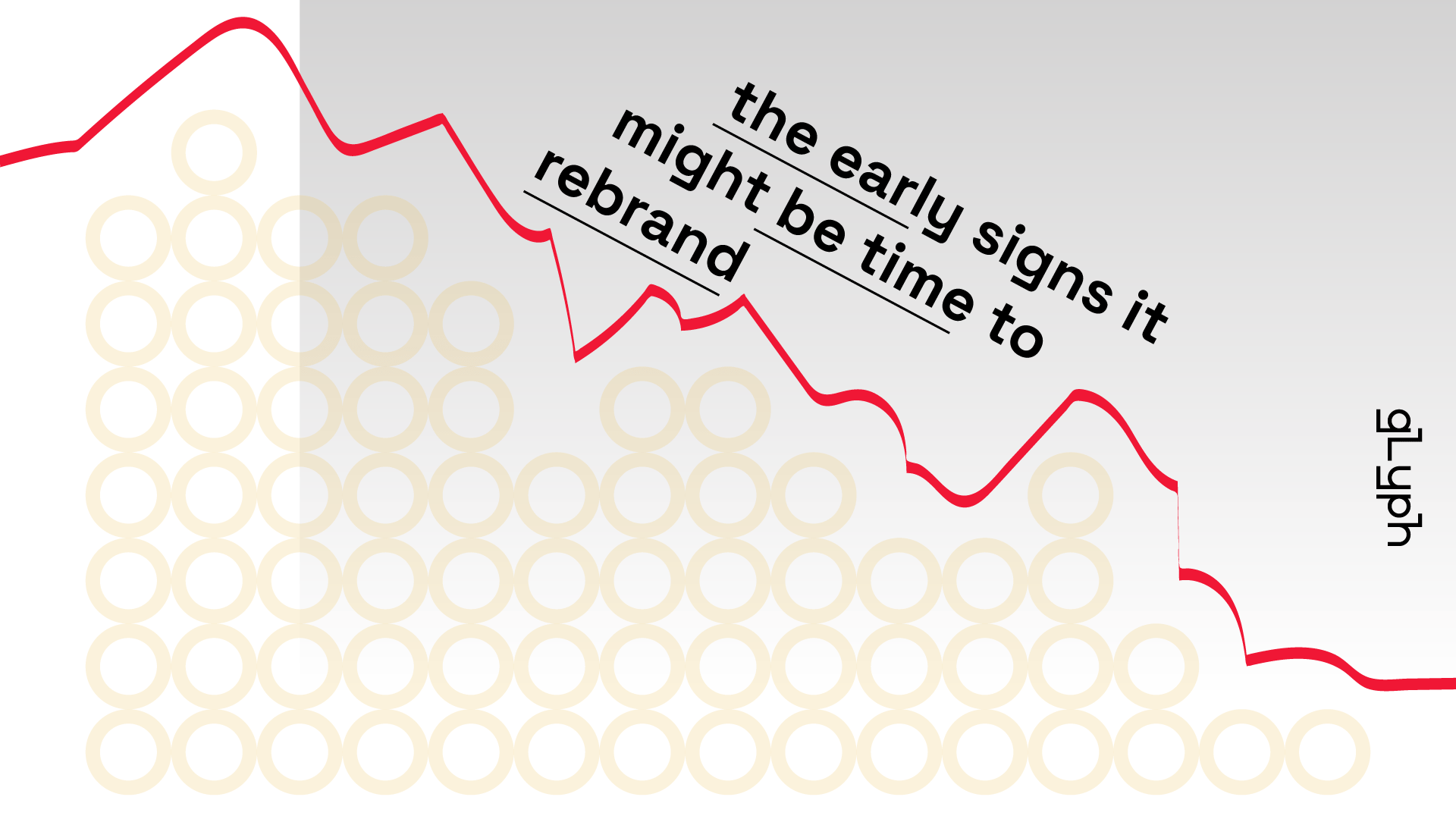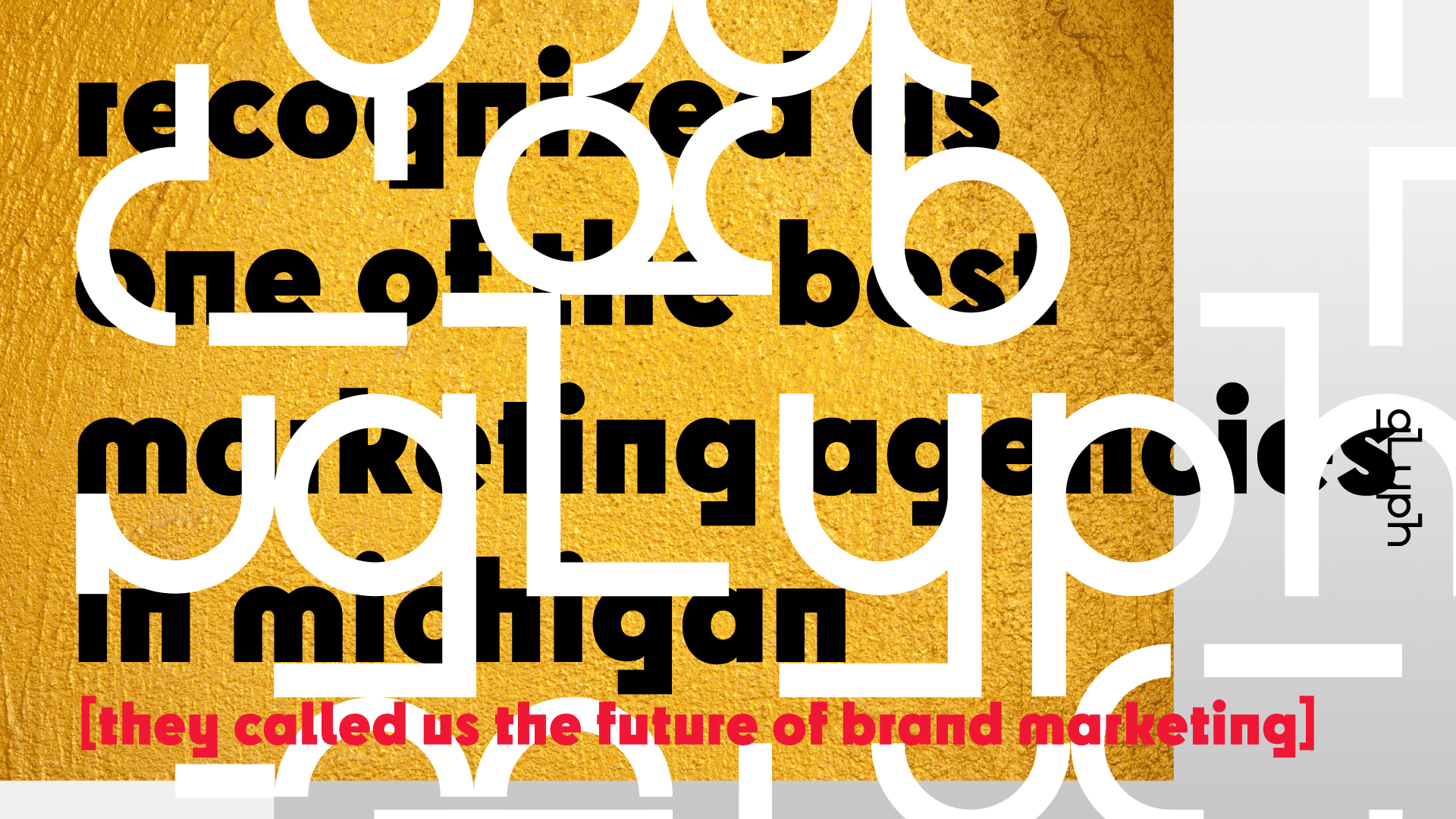As an agency that frequently partners with leading organizations to manage their strategic brand initiatives, we pride ourselves on our ability to look into a new industry and understand their audience. But there are always industry-specific terms and new concepts that we have to familiarize ourselves with first.
For the business or startup looking to launch a new brand, tackle a rebrand, overhaul their marketing strategy, or simply wanting to learn more about branding terminology, you will probably face the same challenge. There are many terms that our professional industry uses on a daily basis that overlap existing concepts, or could be entirely new to your vocabulary.
As with most things, the more you know, the more confident you can be. Getting familiar with some of these key phrases and what they mean can make a monumental difference in coordinating with a team like ours or managing your own strategy. Let’s get right into it!
branding terms
brand
A Brand is the shared perception, relationship, and idea that people have formed about your business. You won’t be able to pick up and hold a Brand in your hand, but it’s one of the most important things to consider and analyze when running a business.
We claim that customers, as a collective, are your Brand. It’s their perceptions and expectations that form the personality that others will feel about your organization. This means that your Brand is a constantly evolving list of qualities that define the relationship with your market and how you separate yourself from competition.
These interaction points can come from just about everywhere including firsthand experience, word of mouth, advertising, websites, customer service, online reviews, product packaging, and more.
A second, common meaning of a Brand that you will hear us mention frequently simply refers to an organization or company. For example, you might think of Ford as a Brand and the Mustang car as a sub-brand of it’s own.
branding
If a Brand is owned by customers, Branding is what you own. It is the intentional act of influencing your market by applying strategic communication and design to products, services and other interaction places where people experience your brand.
For example, a laptop becomes much more than a laptop when it has the Apple branding. That’s because it’s no longer one of the same laptops on the shelf, it’s part of a solution. This is because the Apple culture carries an extensive, encompassing promise to deliver the “Apple lifestyle”.
When looking at Branding, we categorize 3 distinct areas as core parts of The Branding Framework: Brand Strategy, Brand Positioning, and Brand Identity.
brand strategy
Brand Strategy is the intentional act of analyzing, developing, and managing the long-term purpose and goals of an organization or even individual self. Defining the total elements of your organization’s culture helps make it unique, identifiable, and rewarding while also staying true to the unique origin of your organization.
Secondly, a well executed Brand Strategy should impact nearly every aspect of a business and usually includes elements such as Leadership, Brand Culture, Purpose, Organizational Architecture, Brand Experience, and more. Developing Brand Strategy is rooted deeply in the origin of your business and promoting it’s greatest strengths.
brand postioning
Effective Brand Positioning is the process of shaping and navigating your brand into the unique place or position your brand occupies in the marketplace. In short, a well positioned Brand occupies a strategic spot in the market that is perceived favorably by their audience. One of the ways to measure Brand Positioning is the relationship with customers and their willingness to purchase.
Our team focuses on understanding 3 major components: creating a relevant Offering, understanding and defining the Audience, and managing your uniqueness when compared to competition. Most importantly, this means your Brand’s pursued market position should be feasible based on what you deliver, relevant to the correct audience, and intentionally differentiated from the market.
brand identity
Brand Identity is the comprehensive collection of visible elements of a Brand, often referred to as Brand Design or Visual Identity. In crafting a Brand Identity, you are shaping how an audience perceives your Brand and is provided important information you deem relevant.
It helps to look at Brand Identity as the expression of Brand Strategy and Brand Positioning through visual and verbal design. For instance, the distinguishing elements of a Brand Identity include components such as logo, typography, colors, patterns, and more. Above all, it’s best to think of your Brand Identity as the client-facing personality of your business.
brand architecture
Brand architecture is the structure of brands within an organizational entity. It is the way that multiple indepandent brands within a company's portfolio are integrated, related to, and differentiated from, one another.
Brand architecture is important because it helps customers understand the relationship between different brands and products. It also helps companies to manage their brands more effectively.
The right brand architecture for a company will depend on a number of factors, including the company's goals, its brand portfolio, and its target market.
brand asset
A Brand Asset is simply the individual components used to identify your organization as a whole. Often, these are images, logos or pieces of copy that tie directly to your business.
With the digital and print realm changing so rapidly, it’s never been more crucial to keep your Brand Assets organized, detailed, and easy to access across your entire team and contractors.
audience
Brands shouldn’t exist for every person – they should exist for the right person. People are unique, so it should be no surprise that different people will want different things, and often with different approaches. In addition, understanding the who and why of your Audience will help you create a brand that resonates with the right people.
For example, a college student will buy coffee differently than a middle-aged working adult. They have their own buying challenges and personal motives. In summary, understanding the differences in that target market will help you better shape your Brand Framework around being appealing to the right audience and for the right reasons.
competition
Knowing how and where you exist in the market is one of cornerstones of Branding. However, Competition doesn’t just represent a business directly with your products or services. Competition represents customer expectations. It’s not enough to simply exist, you must understand the unique differences between you and the other perceptions that customers form to grow a successful Brand.
Too many organizations think Competition is bad, but we think Competition is healthy for a Brand. In conclusion, a strong Brand will provide people with the ability to recognize what they need and want without having any doubts about which company best matches their lifestyle.
culture
Every company, startup, nonprofit, and even individual products, have sets of unique beliefs, customs, and operating standards which are important for them to identify, develop, and promote.
This philosophy is composed of ideals that are promoted both internally and externally, and reinforced by the actions of every member of the team – from the Founder to the newest employee. For most companies; identifying, understanding, and promoting their Brand Culture is essential to effectively communicating their brand and building relationships with their customers.
vision statement
A Vision Statement is a short outline of what a company desires to achieve in the long-run, generally at a minimum outlook of five or ten years – sometimes even longer for larger organizations.
mission statement
A Mission Statement is a short, concise statement used by an organization to detail it’s purpose for existing. The Mission Statement usually focuses on culture, ethics, and values.
brand values
An organization’s Brand Values are a small list, often three to five, of core principles that shape nearly every aspect of their business and how they aim to build a relationship with customers. The grouping of individual values is carefully selected because they represent the very foundation of the organization’s messaging and personality. Developing and broadcasting these Brand Values is an absolute priority for any Brand.
brand messaging
Brand Messaging is the tone and personality you want your communication to embody. This is essential for building compelling offers and highlighting differences from competition.
For instance, a sports car will feature a different tone than a luxury car. This is even more essential when both cars advertise similar features and price point.
design terms
logo
Your Logo is the icon that represents your organization. You see a Logo used in several ways, the Logo Type such as the word “McDonalds”, the Logo Mark/Logo Glyph of McDonald’s as the “Golden Arches”, and the Logo Set which is the combination of both. Logos can be composed of many different combinations of graphics, icons, images and words.
rebrand
A Rebrand is the comprehensive process of making changes or revisions to the Brand Strategy, Brand Positioning, and Brand Identity. This can be a total rebrand where most Brand Assets are fundamentally changed including the logo. However, it’s becoming more common to see frequent, smaller updates that refresh messaging, target audience, colors, styling, and more.
A Rebrand is usually a very intensive procedure with lots of market research that impacts the entirety of the organization. In addition, it’s crucial to seek input from major stakeholders, audience research, product direction, staff, and even focus groups.
An organization might do a Rebrand because of a change in it’s core services, to expand into a new territories, the launch of a new product, or simply because a large enough time has passed since they have attuned themselves to the growing gap between their customers and themselves.
color palette
This is the main set of colors that an organization uses. It’s common to see a Brand use both a specific branded color and an extended color palette. Often, businesses will hold trademarks on their specific color or color pairings such as Tiffany Blue, John Deere Yellow and Green, DeWalt Yellow and Black, Post-it Canary Yellow, UPS Brown, and Cadbury Purple.
collateral
Collateral, or Brand Collateral, is an all-encompassing term. In most cases, collateral refers to almost any branded, advertising, promotional, or marketing material. This most often includes your business cards, promotional brochures, flyers, advertising videos, email templates, and much more.
typography
This is the system of fonts and typefaces that a Brand utilizes. This is usually a carefully prepared structure with a hierachy of represatation that is meant to evoke a personality and image.
Personally, typography holds a special place in our hearts. To create a lasting Brand Identity, we intentionally build each element around the Brand Foundation and often create hand-made, bespoke typography for our clients and their projects so every element boasts the same, core design.
The Takeaway
Your Brand is the way your organization comes across to your customers. It’s the intangible and tangible factor that makes people want to buy from you or pick a competitor that better represents them. Most importantly, it will make all of the difference in how successful your business becomes and how fast it grows.
As with most things, information is power. And like any game, the side with the most information, the most tools available, is most likely to win the game. We hope that this glossary of Branding terms will be a powerful source of inspiration and direction for you and your organization.
GLYPH is an internationally-recognized brand strategy and brand design agency and consultancy. Our team has been at the forefront of innovating brand strategies and have frequently been rated as one one of the best branding agencies in Michigan.
Is a rebrand on your horizon? Curious how much more competitive your business could be after implementing a new postioning strategy? Grab a cup of coffee with us (in person or virtually) and let's talk about your goals.


